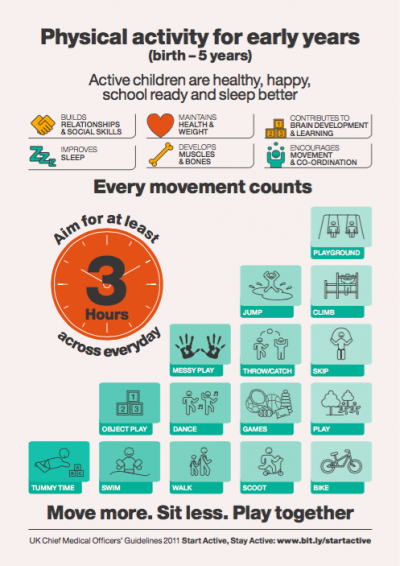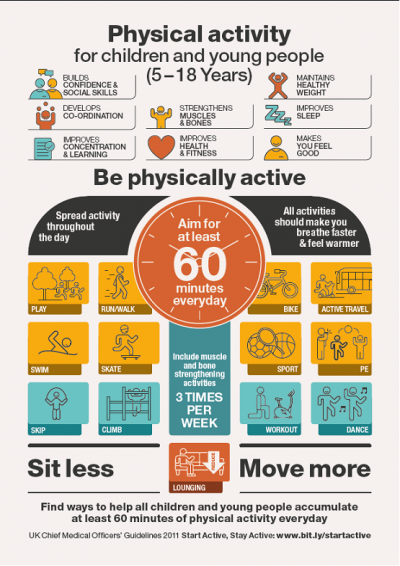Childhood Obesity
Original Editors - Alexander Dow, Andrea Civitarese, Lynne Turner, Alison O’Brien, Rachael Le Page, Courtney Ferguson
Top Contributors - Andrea Civitarese, Rachael Le Page, Lynne Turner, Kim Jackson, Lucinda hampton, Courtney Ferguson, Alison O' Brien, Alexander Dow and Rachael Lowe
Introduction[edit | edit source]
Aims[edit | edit source]
The goal of this page is to provide guidance and information for parents of overweight children, and to empower them to feel confident in managing childhood obesity.
Learning Outcomes[edit | edit source]
- Define childhood obesity and recognize its impact
- Recognize the benefits of physical activity and risks of inactivity
- Apply physical activity guidelines for children
- Define the role of physiotherapists in managing childhood obesity
- Apply management strategies for childhood obesity
- Identify local resources and physical activity opportunities for overweight and obese children and their families
Obesity Overview[edit | edit source]
What is Childhood Obesity?[edit | edit source]
For adults, body mass index (BMI) is the method that is most commonly used to diagnose obesity. This method uses an individual's height and weight to establish whether or not they fall within a healthy weight range.
Healthy weight: BMI = 18.5-24.9 Overweight: BMI = 25-29.9 Obese: BMI = 30-39.9 Severely Obese: BMI = ≥40
For most adults, a BMI of:
- 18.5 to 24.9 means you're a healthy weight
- 25 to 29.9 means you're overweight
- 30 to 39.9 means you're obese
- 40 or above means you're severely obese
The Problem[edit | edit source]
- 16% of children in Scotland age 7-11 and 15% age 12-15 are at risk of obesity (REFERENCE). This means that about 150,000 children are currently at risk for obesity.
- Children who live in deprived areas are less likely to be of a healthy weight (REFERENCE)
- Younger children are more likely than older children to meet physical activity guidelines (REFERENCE)
- Girls tend to have lower levels of activity than boys (REF)
- Children tend to consume food and drinks high in fat and/or sugar more often than adults (REF)
It's not all bad...[edit | edit source]
- 76% of children age 5-15 meet physical activity guidelines, which is an increase from 71% in 2008 (REF)
- 70% of children are considered to be a healthy weight
- Childhood obesity has declined from 17% to 14% since 2014
But there are many potential consequences[edit | edit source]
Managing Childhood Obesity as a Parent[edit | edit source]
The Role of the Physiotherapist in Managing Childhood Obesity[edit | edit source]
Physical Activity Guidelines[edit | edit source]
Benefits of Physical Activity for Your Child (...and risks of inactivity)[edit | edit source]
Barriers and Facilitators to Managing Childhood Obesity[edit | edit source]
Local Opportunities for Physical Activity in Edinburgh[edit | edit source]
Specific Exercise Options for Different Socio-Economic Groups[edit | edit source]
Conclusion[edit | edit source]
Useful Links[edit | edit source]
References[edit | edit source]
see adding references tutorial.








